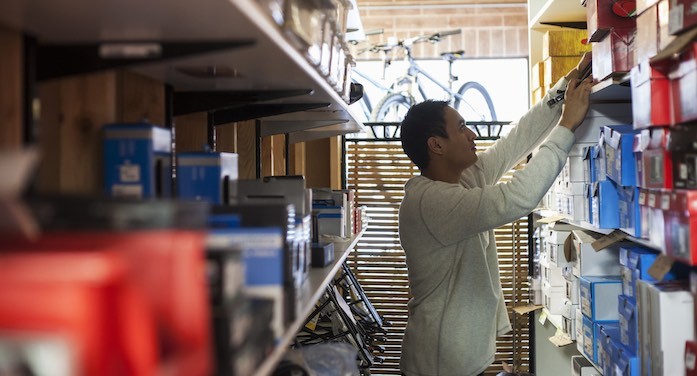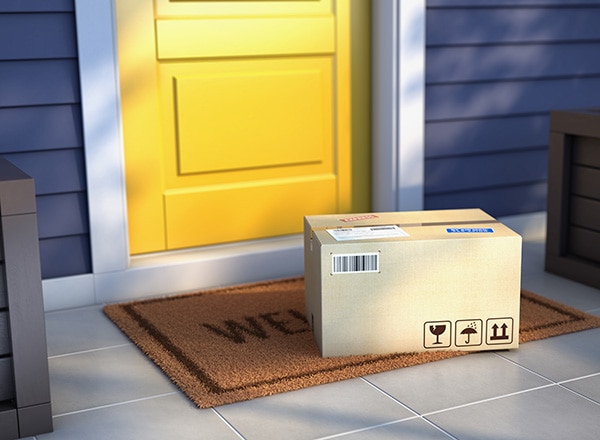The good news: Your products are flying off the shelves. The bad news: Your most popular items are out of stock. Now what?
Backordering lets you to continue making sales and limit the number of customers lost to your competition—if handled correctly.
In this article, we’ll go over what a backorder means, how to use backordering to your advantage, the potential dangers of backordering if dealt with poorly, as well as how to handle backorders with your customer base and in your financial records.
Let’s begin.
Backorder definition: What is backordering in inventory management?
Backorders refers to customer orders for products or goods that are not yet in stock due to customer demand outpacing supply—often referred to as a backlog.
Companies ranging from small eCommerce businesses to goliath retailers like Amazon and Apple can experience backorders for a variety of reasons. You cannot prevent backorders from happening, but you can be prepared to handle them efficiently when they do.
Backordering example
To fully understand how beneficial backorders can be to your bottom line, let’s review an example.
ABC Corporation runs a profitable eCommerce business selling easy-to-install solar panels for $250 per unit. In the weeks running up to Earth Day, the company creates a social media influencer campaign that ends up going viral nationwide.
The company plans for an industry average ROI on their advertising spend and only has only 50,000 units in stock, but initial sales figures indicate that the demand will soon outpace supply.
After quickly communicating with the manufacturer, ABC Corporation determines an estimated delivery date for the additional units and ends up taking an additional 25,000 units on backorder, resulting in a total of 100,000 units sold.
Had the company issued a stockout for the SKU before the holiday, the consumer demand still would have existed, but their potential customers would have shopped elsewhere for their new solar panels.
Backorders let ABC Corporation to generate an additional $6,250,000 in revenue—a 33% increase.
How do backorders differ from stockouts?
A backorder is similar to, but distinct from, a stockout, or out-of-stock (OOS), event. Backorders are purchase orders that will be fulfilled but are delayed due to supply chain disruptions, assembly delays, or the fact that they have not begun production (pre-orders).
Out-of-stock events are items that cannot be purchased by the customer due to supply uncertainty. These items may have completed their production run, could be permanently out of stock, or simply have no known production, manufacturing, or arrival date.
How does backordering work?
When you have items in stock, the purchasing process is straightforward. A customer buys a product. You match the product SKU to the order number. The product ships to the customer and the process is complete (assuming there are no returns).
But when a backordered item is purchased, additional steps are needed.
- First, the customer orders an out-of-stock item, which generates a backorder.
- Next, the backorder is converted into a purchase order.
- The purchase order is then sent to the supplier.
- The supplier then completes the purchase order and sends the items to your warehouse.
- You process and ship the backordered item to the customer.
Inventory management systems to avoid backorders
Dropshipping
To mitigate backlog delays, you may consider reducing shipping and processing time by cutting out several steps of the inventory management process using dropshipping.
When you use the dropshipping technique, you receive sales orders from customers but keep no inventory in stock yourself. Instead, these orders are sent directly to the supplier, manufacturer, or another retailer for fulfillment, who ships the order directly to the customer.
Using dropshipping cuts out several of the additional fulfillment process steps above. The supplier does not have to waste time shipping you the product. You don’t need to receive or process the product at your warehouse. And the items don’t have to be shipped multiple times to arrive at the customer’s door.
Just-in-time (JIT)
Another inventory management system that can reduce backorder frequency is just-in-time (JIT). In a nutshell, the JIT philosophy eliminates waste to simplify and streamline the production process.
While JIT reduces stock levels, this method can also identify and eliminate inefficiencies that can cause unexpected stockouts and backlogs.
Excess inventory lets your company hide inefficiencies like waste, scrap, machine breakdowns, or poor design. JIT exposes these inefficiencies, helping you to more accurately forecast production schedules in the future.
The main causes of backorders
Purchase backorders can happen for a variety of reasons—from an intern forgetting a decimal point to inclement weather. These are the five most common causes of backorders affecting mid-sized businesses today.
- Unexpectedly high demand: The most obvious cause for fulfillment backorders are unusual spikes in demand. This can be a result of product seasonality, a social media campaign gone viral, or a variety of other unforeseen events.
- Extreme weather events: Due to our interconnected global supply chain, production and shipping can be cut off due to extreme weather events such as hurricanes or tsunamis thousands of miles away.
- Manufacturing or production delays: The global semiconductor shortage highlighted just how vulnerable entire industries and economies are to manufacturing delays, even of single components.
- Low safety stock: Safety stock is used in inventory management to provide a cushion in the event of delays or demand surges—and must be carefully managed.
- Human error: Perhaps an employee entered the wrong SKU, or maybe you received an incorrect product from the manufacturer. Simple mistakes can create a backlog of sales orders.
The benefits of backorders
Typically, a small number of backorders with manageable and predictable wait times is a net positive for your business. Here’s why:
Provides a growth roadmap
Tracking backorder analytics can help your organization use data to pursue expansion goals by helping you prioritize your most in-demand products and services.
Indicates potential for price increases
If the backlog is due to unexpectedly high customer demand outpacing supply (and not supply chain disruptions), you may want to consider market-testing a price increase.
Helps maintain lower inventory
Backorders can help your company manage your balance sheet and minimize monthly recurring costs (MRC) in the form of carrying costs by enabling you to maintain a lower level of inventory while maintaining sales figures.
The risks of backorders
While backorders can signal growth opportunities, handling your backlog without proper care can have serious consequences for your business. If lead times are long (or your customers notice that backorders are frequent), you may lose loyal customers to your competitors.
How to handle backorders with your customer base
Honest, empathetic, and clear communication is the key to managing backorders and customer expectations effectively. Follow these five easy steps to reduce your chances of purchase cancellations, lost customers, and decreased revenue.
- Determine the ETA: Ask the source of the delay for an accurate estimated arrival date.
- Label your product page: If the timeframe is manageable, put a message on your product page that the item is backordered and explain when the item will be back in stock.
- Gather information from prospects: On your product page for the backordered item, ask visitors if they want to know when the item is back in stock. If yes, request their name and email address so you can notify them later via email.
- Send your customers a notification: Provide your customers with an anticipated arrival date for their purchase. Thank them for their loyalty and patience and let them know what you’re doing to help (like offering free expedited shipping).
- Communicate when the product is back in stock: Tell your existing backlog customers that the items they ordered are back in stock and are being shipped. Then, alert interested sales prospects that the item is back in stock and ask if they would like to place an order.
Accounting for backorders without affecting your bottom line
The best practice is to record these events as backorders in company financials—as opposed to treating them on your books like completed orders. This way, your balance sheet will not be affected in the scenario that a customer cancels their delayed order.
In addition, consider waiting to charge your customers until the backordered product has been received in your warehouse and has entered the shipping phase. This is a practice used successfully by Amazon.
Waiting to process payments until they have shipped serves two purposes. First, this will simplify your financials because cancelled orders will not have to be reimbursed. Second, the end customer will be happy to know that you are not charging them until the product is signed, sealed, and en route.
You may also want to consider secondary costs that backorders will necessitate, including expedited shipping and holding costs.
Final thoughts
Backorders can happen at any time to any business, large or small. Handling your backorders correctly can help spur growth and expansion, while dealing with backorders poorly can cause loyal customers to walk away from your business.
Now that you have a better understanding of the backordering process and how to handle your backlog with customers and accounting team, you should be equipped with the knowledge to use backorders to your advantage.
With QuickBooks Online Plus and Advanced editions, you can turn on Inventory Tracking to stay in control of inventory levels and transaction profitability, and to set reorder points to automatically initiate purchase orders from preferred vendors when inventory is low.
If you’re ready to simplify your inventory management and reduce time spent on manual processing, sign up for a QuickBooks Online Advanced free trial today.













